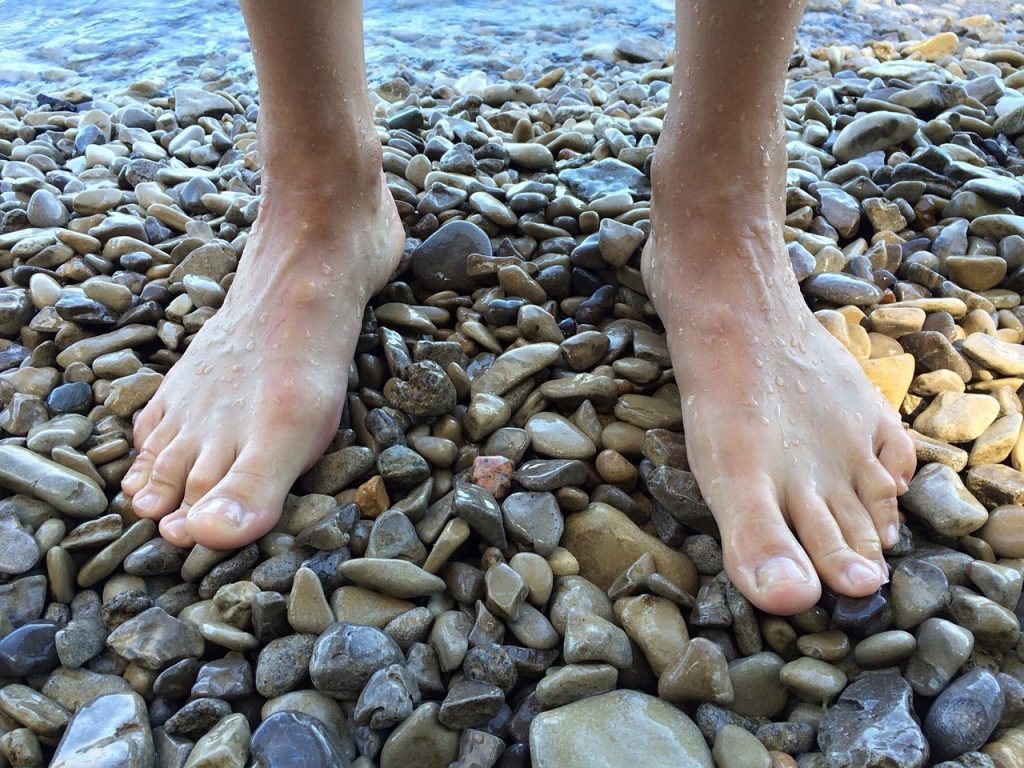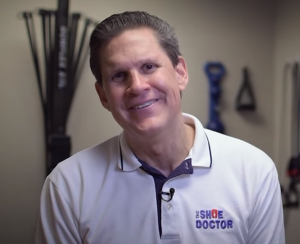Key Takeaways
- Orthotics help plantar fasciitis by offering support, cushioning, and alignment to alleviate stress on the plantar fascia.
- While custom orthotics are tailored to your foot, prefabricated devices provide prompt, affordable comfort for a broad range of patients.
- We specialize in orthotics with proper arch support and heel cushioning that prevent further injury.
- By promoting even pressure distribution and realignment of foot mechanics, orthotics can ultimately treat the underlying biomechanical issues and support long-term foot health.
- Orthotics need to be combined with a complete treatment plan, and can include physical therapy, stretching, and the right footwear, not be used as a sole solution.
- Continued monitoring of orthotic fit and communication with healthcare professionals, particularly if pain continues, remain important to maximize their effectiveness and to minimize the recurrence of symptoms.
A lot of plantar fasciitis patients experience stabbing heel pain, especially in the morning or after extended periods of walking or standing. When you wear orthotics like shoe inserts, they distribute pressure more evenly and may reduce pain during activity. Doctors frequently recommend custom or store-bought orthotics as one part of a comprehensive treatment plan. Foam or gel insoles help pad your stride and reduce inflammation. For the majority of folks, orthotics slide into normal shoes and are most effective when paired with uncomplicated stretches and downtime. To demonstrate how orthotics work and which options fit best, the following sections dissect design, application, and actual outcomes.
What’s Causing Your Heel Pain?
Plantar fasciitis is the leading cause of heel pain, especially common in adults over 65 but also seen in younger individuals who are overweight, sedentary, or work on their feet for long hours. The underlying issue is usually tension or stress placed on the plantar fascia, a thick band of tissue that runs from the heel to the toes and functions as a shock absorber. When overloaded, this tissue develops micro-tears that trigger inflammation and pain. Here’s a closer look at contributing factors:
- Overuse and strain – Runners, laborers, and anyone on their feet all day face repetitive stress that wears down the fascia.
- Improper footwear – Thin soles and unsupportive shoes fail to cushion the heel and arch, worsening the problem.
- Foot structure issues – Flat feet or high arches disrupt how pressure is distributed, forcing the fascia to overcompensate and increasing injury risk.
- Heel spurs – These bony protrusions may intensify pain, although not all individuals with heel spurs show symptoms.
- Inflammation response – The body’s repair process can lead to additional swelling and pain, affecting nearby tissues like the heel pad or bone.
- Movement extremes – Both prolonged inactivity (e.g., desk jobs) and high-impact hobbies can aggravate the fascia.
There’s no one-size-fits-all cause of plantar fasciitis. The effectiveness of orthotics—custom or off-the-shelf—depends on the root cause of each case. Still, studies suggest orthotics can reduce pain and improve function within 1–3 months, with minimal risk involved.
How Orthotics Help Plantar Fasciitis
Orthotics, which are inserts for your shoes, provide additional support, shock absorption, and alter the mechanics of your foot. Studies have found that custom and prefabricated orthotics can help plantar fasciitis sufferers feel better and move more easily, sometimes in just a few months. The right orthotic can assist by providing your foot with increased control, relieving stress, and dissipating weight over a wider area. Still, they won’t work the same for everyone, and combining orthotics with other therapies tends to be most effective.
1. Arch Support
Arch support is important because it prevents excess stress from developing on the plantar fascia, the tissue band on the bottom of the foot. Lacking such support, this tissue can stretch or rip, resulting in pain.
A quality orthotic fits the arch height and form, which may help avoid additional damage and accelerate recovery. Customized support equals less stress on the fascia and greater stability when standing, walking, or running. Even if you opt for a store-bought insert, as long as it fits well and suits your foot’s needs. With your arch well supported, balance and control improve, so you’re less likely to step in a way that aggravates the injury.
2. Heel Cushioning
Orthotic heel pads absorb the shock every time your heel strikes the ground.
Materials are important in this regard. Certain orthotics utilize foam, some use silicone or gel. Gel pads have a reputation for providing additional spring and are popular for individuals who are on their feet all day at work or for athletes. Heel cushioning should be built into your everyday shoes, not just athletic ones, to help combat symptoms throughout the day.
Heel cushioning distributes the impact of each step, so the plantar fascia doesn’t bear the entire burden.
3. Realigning Feet
Orthotics can alter the alignment of your foot with your ankle and leg, which can correct postural issues and alleviate pain. This realignment can be particularly useful for individuals whose plantar fasciitis stems from flat feet, high arches, or rolling ankles.
Altering foot alignment can address other biomechanical problems, such as knee or hip pain, because it alters the movement of force up the leg. By fixing such issues, orthotics don’t just aid the foot, but can impact how the entire body feels.
4. Distributing Pressure
When weight sits too heavily on one point, the fascia becomes overstressed. Orthotics distribute pressure across the entire foot, reducing tender areas.
Custom insoles can target places where pressure accumulates, important for those with irregularly shaped feet or gait abnormalities.
Even pressure counts when you’re on the move, so you can move without exacerbating the pain.
This helps stop new problems from starting.
5. Absorbing Shock
Orthotics employ shock-absorbing layers that prevent excessive forces from being transmitted to the fascia. The best inserts utilize thick foam or gel for this.
Great shock absorption prevents feet from growing fatigued and allows you to do more with less discomfort. It’s an easy way to shield the fascia and enhance comfort.
Custom vs. Prefabricated Options
We can treat plantar fasciitis with orthotics — not all orthotics are created equal. Knowing the distinction between custom and prefabricated solutions enables individuals to select what aligns with their requirements, budget, and expectations.
1. Custom orthotics, on the other hand, are created in response to an extensive foot evaluation, such as measurements or molds, to accommodate the individual contours of each foot. These are usually recommended for individuals with particular foot issues.
2. Prefabricated orthotics, or over-the-counter inserts, are mass-produced and available in different sizes and shapes. They aim at the average foot, not your foot.
3. Custom orthotics tend to hold their value over time. Prefabricated ones, though cheaper, can fray within a year or less and can go out of support.
4. Prefabricated solutions come fast and cheap, so they make an efficient initial solution, particularly for frugal users or those requiring instant relief.
5. Studies indicate that each can aid in enhancing foot mechanics and alleviating plantar fasciitis discomfort. Custom orthotics likely provide longer-term, more specialized relief for chronic or intricate cases.
The Custom Mold
Custom orthotics begin with a more in-depth procedure, typically involving a podiatrist creating a physical or digital impression of the foot. This guarantees the insert fits the precise shape of each person’s arch and heel.
The big advantage is the custom fit. Individuals with odd foot shapes, major flat-footedness, or high arches tend to see the most benefit with custom molds, as those devices specifically target biomechanical problems.
While custom orthotics can be pricey initially, numerous people report that the investment is worth the long-term comfort and support. They usually hold up well and stay functional much longer than something you can grab at a retail outlet, so you’re not constantly replacing them.
Expert podiatrists are a crucial component—they evaluate, fit, and tweak the orthotics for an ideal fit. Their experience minimizes the possibility of misaligned orthotics and appropriately targets the source of pain.
The Off-the-Shelf Solution
For many, prefabricated orthotics offer an easy, initial strategy. They’re available at drug stores, sporting goods stores, or online, and folks can begin using them immediately.
Choices that come in various thicknesses and materials for different arch support. This diversity makes it convenient to sample a few styles to find what works best.
Prefabricated orthotics are widely available and inexpensive, a boon for those on a budget or needing fast relief for minor complaints.
It’s all about quality—select a good product, because poorly designed inserts can exacerbate discomfort or not offer support.
Signs It’s Time to Switch to Custom Orthotics
Off-the-shelf orthotics can provide temporary relief, but they’re not always a long-term solution. If pain lingers or new symptoms arise, your feet may need more specialized support. Knowing when to upgrade to custom orthotics can prevent further damage, improve comfort, and help you stay active without unnecessary strain or discomfort.
- Pain persists despite using off-the-shelf orthotics.
- Symptoms worsen or new issues appear.
- The inserts flatten or fall apart within months.
- Individual foot needs are not met by standard options.
Continued pain can be an indicator that you need a custom approach. Shifting symptoms or persistent pain require foot health and orthotic evaluations.
It’s good to review this regularly, especially if your activity levels or health status change.
Professional advice is recommended if symptoms do not improve.
Support, Not a Substitute
Orthotics aren’t a cure for plantar fasciitis, but they’re an important piece of the puzzle in managing symptoms and keeping people active. When used properly, orthotics prop the foot and alleviate pain, but they function best as a component of a larger strategy. Depending on them exclusively can cause atrophy in foot muscles; therefore, it’s logical to combine orthotics with other habits. Top care is staying active and addressing the underlying causes, not just the ache, with a multi-pronged approach.
- Maintain consistent stretching of the calf and foot
- Wear properly fitting, supportive shoes appropriate for your activity.
- Get on a physical therapy schedule, as recommended by a health professional.
- Check your foot health often, especially as symptoms change
- Balance orthotic use with barefoot activities or strengthening exercises
- Shoot for incremental activity, not exercise leaps.
Correcting Mechanics
Orthotics function by correcting foot motion. If foot mechanics are off, pain can manifest in the heel or arch. A good orthotic helps align the foot and ankle, making steps roll out more easily and with less pain. This is important for flat-footed, high-arched, or other structural issues.
It’s crucial to deal with how your foot strikes. If you neglect the root cause, pain will continue to return. Orthotics assist by distributing the pressure under your foot, so that no single point absorbs all the stress. This aids your gait and can balance your stride. In the long run, improved foot function = fewer flare-ups and pain upon movement.
Enabling Healing
Orthotics assist healing by off-loading the plantar fascia. Less stress allows the tissue to heal. This is critical in early recovery. Bracelets reduce inflammation and allow the fascia to repair with reduced tension.
They prevent the pain from returning. Orthotics during recovery can prevent the foot from being re-injured. They simplify being on the move while your foot heals.
The Bigger Picture
Orthotics need to fit in with a complete strategy. Physical therapy and stretching are equally important as the orthotic itself.
Good shoes count as well. Foot-shaped supportive shoes assist the orthotic in doing its job.
Stay on your toes. Your requirements may evolve.
When Orthotics Alone Won’t Solve the Problem
Orthotics can help ease the pain of plantar fasciitis—but they’re not a one-size-fits-all solution. Many people still experience discomfort even with contoured sandals or custom insoles, and relief isn’t guaranteed. Results vary widely depending on factors like foot shape, shoe choice, and activity level. Even with the same diagnosis, two individuals may need completely different approaches based on their bodies and lifestyles.
When orthotics alone fall short, consider combining them with other treatments:
- Night splints to keep the foot stretched during sleep
- Daily foot and calf stretches to support mobility and healing
- Anti-inflammatory medications for pain relief
- Supportive footwear paired with orthotic insoles for enhanced comfort
People with flat feet, high arches, or chronic foot problems may benefit more from custom orthotics, but even these aren’t always enough. In stubborn cases, doctors may recommend corticosteroid injections or, rarely, surgery. Ongoing pain should never be ignored. It’s essential to check in regularly with a medical professional to adjust your plan and ensure your treatment evolves with your needs. What works today may not be enough tomorrow, and sometimes, healing just takes time, regardless of what’s in your shoes.
Finding the Right Orthotics for You
The key to making orthotics work for plantar fasciitis lies in finding the perfect fit. Custom orthotics are shaped to match the unique contours of each foot, providing targeted support where it’s needed most. A poorly fitted insert can do more harm than good, increasing strain or creating new pressure points. When fitted correctly, orthotics help reduce stress on the heel and arch, allowing for greater comfort when walking or standing.
Here’s what to keep in mind when searching for your ideal fit:
- Comfort and support are essential – A good orthotic should feel firm but not rigid, offer consistent support across the foot, and avoid any rubbing, pinching, or pressure spots.
- Watch for red flags – Tingling, numbness, or pain usually indicates a poor fit.
- Know your needs – Some feet benefit from extra cushioning, while others need motion control. The smallest design tweaks can make a huge difference in comfort.
- Get expert guidance – Podiatrists or trained orthotic fitters can perform gait analysis and foot exams to determine if you need functional (motion-guiding) or accommodative (comfort-focused) orthotics.
- Expect adjustments over time – Weight changes, new activities, or evolving foot pain may require a new fit. Regular check-ins every 6–12 months ensure your orthotics still serve their purpose.
- Break them in gradually – Start by wearing new orthotics for an hour or two per day, increasing time slowly to allow your feet to adjust to the support.
A precision fit isn’t just about comfort—it’s about long-term relief, better mechanics, and avoiding future injuries.
Conclusion
Orthotics do help a lot of people with plantar fasciitis. They provide aching feet with proper form and structure. Quality arch and heel pads can absorb some impact and alleviate pain. Custom and off-the-shelf varieties both have their spot – consider what suits your lifestyle and requirements the most. Yet, no one tool works for all. So, stretch & move, maintain your weight, and mind your shoes. If pain lingers, contact a physician or podiatrist. Careful and consistent strides are what count.
Frequently Asked Questions
1. Do orthotics help relieve plantar fasciitis pain?
Indeed, do orthotics help plantar fasciitis? This support typically results in reduced pain with activity.
2. Are custom orthotics better than prefabricated ones for plantar fasciitis?
Custom orthotics are designed specifically for your feet and might give you better support. For some individuals, over-the-counter types work just fine, too.
3. How long should I wear orthotics for plantar fasciitis?
Use orthotics daily as prescribed by your provider. A lot of folks begin to notice relief after a couple of weeks, but extended use might be required.
4. Can orthotics cure plantar fasciitis permanently?
Orthotics don’t cure plantar fasciitis, but they do help. They alleviate pain and promote healing. Other therapies, such as stretching and rest, are often necessary as well.
5. When should I see a doctor if orthotics do not help?
If you continue to experience pain after a few weeks of orthotics and self-care, see a doctor. Continued pain should be evaluated and treated further.
6. Can I use orthotics with any type of shoe?
Orthotics are inserted in most shoes with removable insoles. Select shoes with lots of room and support. Not all shoes will feel comfortable to an orthotic.
7. Are orthotics safe for everyone?
Orthotics are safe for most people. Those with specific foot conditions or other medical problems should check with a healthcare provider prior to using.
Struggling With Plantar Fasciitis? Find Real Relief With Custom Orthotics From The Shoe Doctor
If you’re dealing with sharp heel pain or stiffness when you take your first steps in the morning, you may be suffering from plantar fasciitis—a common condition caused by strain on the ligament that supports your arch. At The Shoe Doctor, our custom orthotics are designed to reduce that strain, relieve pressure, and help you walk comfortably again.
With over 20 years of experience, Russell uses advanced 3D foot-mapping technology to create orthotics tailored to your exact foot shape and movement. These orthotics don’t just cushion your heel—they correct alignment, support your arch, and help prevent the condition from coming back. Through our partnership with the Spine & Injury Medical Center in San Jose, we also ensure your whole body mechanics are taken into account for lasting relief.
If you’re in the South Bay Area, schedule your free consultation today. Let The Shoe Doctor help you walk pain-free and reclaim your day—starting from the ground up.
Disclaimer
The materials available on this website are for informational and entertainment purposes only and are not intended to provide medical advice. You should contact your doctor for advice concerning any particular issue or problem. You should not act or refrain from acting based on any content included in this site without seeking medical or other professional advice. The information presented on this website may not reflect the most current medical developments. No action should be taken in reliance on the information contained on this website, and we disclaim all liability for actions taken or not taken based on any or all of the contents of this site to the fullest extent permitted by law.


